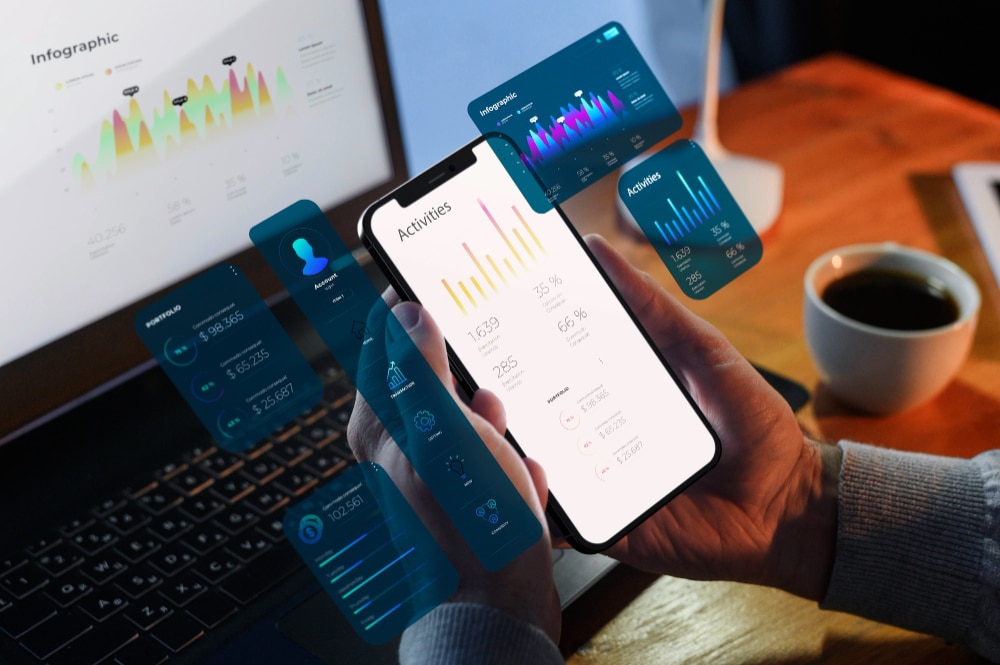Welcome to the intricate world of local SEO, where the stakes are high, but the rewards? Oh, they’re worth every effort. Playing the local SEO game correctly is not just crucial—it’s a game-changer in a world where search engines rule. So, let me take you on a journey through the strategies and tactics that transformed my small business. We’ll go through different strategies for gaining visibility through local SEO, from optimizing Google My Business (now Google Business Profile) to local citation building, content marketing, link building, and mobile optimization.
Key Takeaways
Local SEO focuses on enhancing search engine visibility for businesses that have physical locations, aiming to boost their online presence. You can enhance your organic traffic from searches conducted by customers in nearby areas by implementing local SEO best practices. These strategies include:
- Optimizing Google My Business
- Establishing a robust local presence using local citation strategies
- Local content marketing
- Enhancing local authority through local link-building
- Mobile Optimization
What Is Local SEO?

Local SEO focuses on enhancing search engine visibility for businesses that have physical locations, aiming to boost their online presence. You can enhance your organic traffic from searches conducted by customers in nearby areas by implementing local SEO best practices.
Search engines use various signals, including local content, social profile pages, links, and citations, to deliver the most relevant local results to users seeking information for local searches.
This strategy allows businesses to effectively target and reach local prospects and customers who are actively searching for their products and services.
Local SEO Strategies For Your Small Business
Here are some local SEO strategies you can implement for your small business:
Optimizing Google My Business (Now Known as Google Business Profile)
I took the initiative to claim and optimize my Google My Business (GMB) listing, which was crucial for achieving local SEO success. My quaint coffee shop in the heart of Portland transformed from a hidden gem into a beloved local hotspot. By enhancing our GMB profile, incorporating enticing visuals, and fostering customer feedback, we successfully obtained a highly sought-after spot in Google’s local search sidebar.
Additionally, I found that actively participating on social media and effortlessly incorporating posts into GMB became my winning strategy. Google places a high value on social media content and it is perfectly compatible with local search. What is the outcome? An exceptional blend of social and search that skyrocketed my business.
Add Location Pages To Your Website
If you have more than one location, create location pages. Location pages provide readers with your name, address, phone number, store hours, unique store descriptions, parking/transit information, promotions, and testimonials from happy customers.
It’s also important that you avoid duplicating content across multiple location pages. For single-location businesses, create a locally descriptive About Us page. Harness the power of Google Maps. People love convenience, and having your business show up on Google Maps can be a game-changer.
Checklist For Adding Location Pages To Your Website
Local Citation Strategies: Establishing a Robust Local Presence
Ensure your name, address, and phone number are consistent online.
Consistency is crucial. By ensuring that your Name, Address, and Phone number (NAP) are consistently and accurately displayed on various online platforms, you make it convenient for both customers and search engines to locate you. Just picture the frustration of losing potential clients because of mismatched phone numbers! Always ensure that your NAP (Name, Address, and Phone number) is easily accessible to search engine crawlers. You can strategically place this information in the footer of your website and on the “Contact Us” page.
Discovering the best local citation sites is all about being visible. The local florist in my neighborhood has gained popularity by getting mentioned on various platforms such as Yelp, Yellow Pages, and the Chamber of Commerce. Customers easily discovered the delightful floral offerings, thanks to a well-crafted online presence.
Optimize Online Directories and Citations
The next step involved optimizing online directories and citations. I found great support in four map data aggregators—Express Update, Neustar Localeze, Foursquare, and Factual. They truly became my allies. Google was able to accurately display our business in search results because these aggregators maintained consistency and completeness.
Here’s a helpful tip: To optimize your listings, make sure to remove any duplicates. Additionally, you might want to consider joining your local Chamber of Commerce for an extra boost in local connections.
Local Content Marketing

Local content marketing is another important SEO strategy for a small business. I found that tailoring my content to specific locations was a game-changer. If you own a bookstore, you can boost your online presence by creating content that highlights local authors, events, and the rich literary history of a charming bookstore in a historic district. Thus, you can establish yourself as the preferred destination for book enthusiasts in the community.
Crafting content that is tailored to the local audience has become the latest trend. I realized the significance of narrowing my focus to local or industry news, as it tends to attract a more engaged audience. Through strategic promotion of industry gatherings, local news, and employee spotlights on your blog, you can successfully establish your business as the go-to local authority. Your ability to provide valuable information beyond your products will help you establish a strong connection with your audience.
When it comes to content, every new blog post is a new indexed page for your site, a new page on which to target a geographic search phrase, and a new opportunity to get found in the search engine results pages (SERPs).
Every time you write a piece of content, you need to optimize the content for search engines by using high-volume keywords in the URL, title, header, meta description, and body. If you’re having trouble coming up with geo-targeted content, consider highlighting customer success stories and case studies.
#1. Get Links From Other Ranking Sites
This strategy is commonly known as Barnacle SEO. You can easily find relevant information by conducting a Google search and obtaining links from the websites that appear in the results.
It’s unlikely that you’ll receive links from your competitors, but try searching for aggregator or directory-type sites. When looking for a company, people frequently use these types of websites. Signing up and adding your business is typically all it takes to get listed on them. This method guarantees that you will be taken into account and receive tangible benefits for your business.
#2. Get the links that your competitors have
There may be numerous link opportunities that are both contextually and locally relevant when you examine the overlap of links to your competitors’ sites. Checking this is a breeze with Link Intersect. By inputting your website and your competitors’ websites into the tool, you will be able to identify the websites that link to your competitors but not to you.
You’ll come across numerous links that are tailored to your niche, along with a plethora of directories. These directories are commonly known as local citations and contain important business information like your name, address, and phone number.
Read Also: TARGET COMPETITORS: 18 Biggest Target Competitors and Alternatives
#3. Recover lost links
As time goes by, websites undergo changes, resulting in the presence of broken links leading to non-existent pages. When you redirect the outdated versions of your pages to the current ones, you can regain those lost links and their value.
#4. Create content that is tailored to the local audience
Creating content involves identifying subjects that will resonate with your desired audience, carefully strategizing, crafting, and ultimately sharing that content. Consider creating content that is both relevant to your business and valuable to your audience.
Consider exploring topics such as the optimal type of grass for your region, prevalent pests, or the local pricing of services.
Admittedly, it’s quite improbable for this kind of content to naturally generate a large number of backlinks. Email outreach makes it easier to build links.
Read Also: Creating Valuable Content For Affiliate Marketing: A beginner’s guide
#5. Make sure to claim any mentions that are not linked.
When other websites mention your company or people at your company without including a link back to your site, it’s considered unlinked brand mentions. For optimal results, it is advisable to focus on a specific niche that receives regular news coverage, such as the legal profession, or if your company and/or target audience are already engaged in the community.
#6. Consider acquiring companies, or at the very least, their websites.
Occasionally, mergers and acquisitions can occur at the local level, although this is less common and depends on the specific circumstances. Sometimes, you might come across a company that is selling their pre-existing website or allowing one of their domains to expire. With these, you can choose between having two ranking sites or one site that performs even better. Opportunities like these are quite uncommon at a local level, and I’ve only had the privilege of experiencing them a few times in my career. However, if you are fortunate enough to come across such an opportunity, it holds immense value.
Acquiring inbound links that are both relevant and authoritative has become a top priority. We utilized sponsorships, partnerships, and guest blog postings as our main channels. We began by utilizing our extensive network, tapping into connections with the Chamber of Commerce, business improvement districts, and trade associations. Engaging in community conversations attracted a significant number of inbound links, fostered social media growth, and garnered media coverage.
#7. Improve your internal linking structure.
Although external links pointing to your site are ideal, adjusting your internal linking structure will also boost your SEO rankings. Internal linking helps you support website navigation, assists with information architecture and website hierarchy, as well as distributes page authority and ranking power among pages.
Mobile Optimization

Remember that time you poured your heart and soul into creating the perfect website, only to realize when you finally held your phone over it… yikes, it’s a blurry mess. It’s a common challenge that most small business owners face. That’s why mobile optimization is important; it’s not just a cliche, it’s a lifeline for any business trying to thrive in this mobile-first world.
When my friend Barry started his bakery, it was just himself and his grandma’s secret croissant recipe. But when folks started buzzing about the flaky goodness online, things got, well, a little crazy. Suddenly, orders were pouring in via Instagram DMs, Facebook comments, and other social media handles. But guess what? His website was still stuck in the desktop dinosaur age.
Barry lost countless hungry customers who couldn’t decipher the tiny menu font on their phone screens or figure out how to place an order without squinting like a mole at noon. It was heartbreaking! So, with my help, Barry took his business to a whole new level by optimizing his website for mobile use. The steps we took were pretty simple, and I’ll outline them below:
Read Also: MOBILE MARKETING: Definition, Example & All You Need To Know
#1. Create a responsive design
First things first: responsive design. A responsive design ensures that your website looks great and functions properly, regardless of the device being used. We went from a rigid, one-size-fits-none layout to a website that gracefully bends and flexes to any screen size, smartphone or laptop. Bam! Crispy croissants on iPhones and flaky goodness on iPads were a digital bakery buffet.
#2. Optimize the website loading speed
Next, we tackled the speed demon. Nobody wants to wait forever for their virtual pastry fix, so we streamlined our code, optimized images, and gave caching a whirl. Now, the website loads faster than a baguette out of the oven, keeping those hangry cravings at bay. Mobile users have shorter attention spans and are more likely to abandon a site that takes too long to load. Therefore, search engines favor mobile-friendly websites that load quickly and provide a better user experience.
Let’s not forget navigation; think of it as the crumbs leading to the delicious center. We ditched the complex menus and cryptic buttons, opting for clear headings, juicy product descriptions, and buttons big enough for even Grandpa’s sausage fingers to tap. We wanted our website to be as easy to navigate as a freshly baked croissant, one bite at a time.
#4. Ensure your content is mobile-friendly
Don’t ever forget that content is key. Optimize your text and formatting to be easily readable on mobile screens. We kept the content mobile-friendly, breaking down dense text into bite-sized paragraphs and adding bullet points like sprinkles on a cupcake. And those fonts? We chose ones that were friendly even to the most tired grandma squinting at her phone in the afternoon sun.
#5. Implement mobile-specific features
Mobile-specific features are like the cherries on top. Click-to-call buttons for instant gratification, maps that guide customers straight to our bakery door, and even a real-time “croissant counter” so everyone knows just how many buttery beauties are left. That’s mobile optimization done right!
By optimizing your website for mobile devices, you not only enhance the user experience but also improve your chances of appearing in local search results. Mobile usage has skyrocketed in recent years, and catering to mobile users is now a necessity for any local business aiming to maximize its online visibility and reach.
Final Thoughts On Local SEO Strategies For Your Small Business
Mastering local SEO may not be overly complex, but it does demand commitment and a touch of ingenuity. These SEO strategies have truly transformed my local business, from optimizing my GMB to building a strong online presence. Get ready to put these tips into action and witness your business thrive in the local spotlight. Enjoy optimizing!
- Does a Parking Ticket Affect Your Insurance: All You Need
- LOCAL MARKETING: Explained With Ideas, Strategies, and Guides
- HOW TO GET A SPEEDING TICKET OFF YOUR RECORD IN DIFFERENT STATE
- HOW TO BRAND YOURSELF: Best Tips






